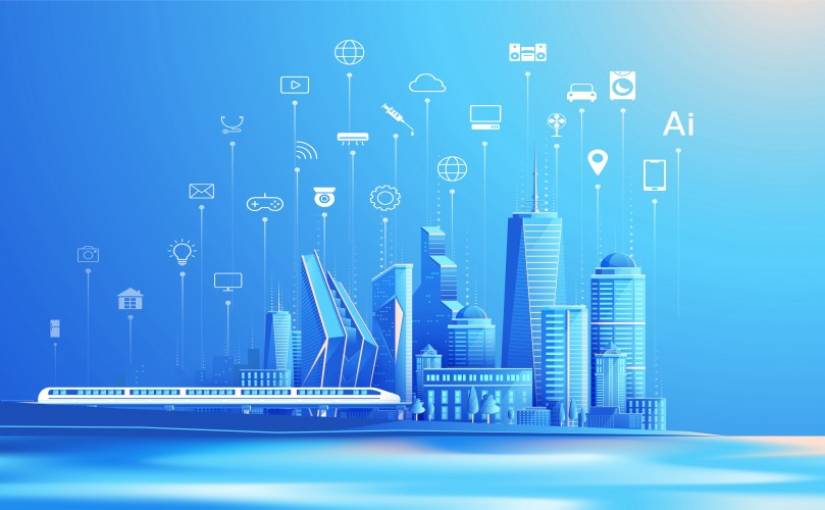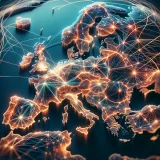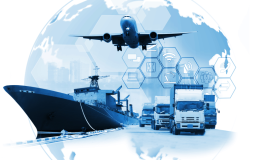As the global population continues to grow, and more people move to urban centers in search of better opportunities, city planners and authorities must turn to IoT smart technology to address the issues of large-scale urbanization.
From public transport to waste management. Security systems to lighting and heating. Ensuring that the residents of today’s sprawling population centers can benefit from city life is a challenging and unforgiving task. That is without the aid of smart technology.
The rise of the Internet of Things has revolutionized how local authorities manage, improve upon and maintain public infrastructure. Smart technology like this continues to lead the development of informed city management systems and automated essential public services. This article seeks to understand IoT’s changing role in the development of smart cities and how such systems are used to solve modern problems.
IoT Systems and Essential Infrastructure
The idea to automate and streamline essential city management processes such as waste disposal services, public transport and security systems with the aid of intelligent sensors and analytics isn’t an entirely new concept. However, modern IoT devices have taken the idea of smart technology to new and exciting extremes.
Waste Disposal in Smart Cities
Perhaps the best example of this is in the way that modern smart cities handle large-scale waste disposal. With 56% of the world’s population now living and working in city centers, and urban populations projected to double by 2050, officials must find a way to modernize waste management and disposal services to ensure that residents are not overwhelmed by refuse.
Research shows that 2.12 billion tonnes of waste are produced globally every year. Naturally, sanitation departments must find a way to efficiently collect, process and dispose of such materials without placing unwarranted stress on physical infrastructure. There are several ways the implementation of IoT devices can measurably improve these processes. One great example being the smart bin systems of the city of Nita, Slovakia.
By utilizing a network of IoT smart sensors installed inside the city’s semi-underground bins, officials are able to view waste levels in real-time from a centralized monitoring station. Teams can then analyze this information alongside traffic reports and historic data to improve local services. Implementing such a system helps officials plan optimized collection routes to reduce carbon emissions, prevent traffic disturbances and ensure that the city remains sanitary.
Public Transport and Pollution
Another growing issue for the residents of modern smart cities is aging traffic infrastructure and related pollution concerns. According to data published by the World Health Organization, as many as 90% of global citizens live in areas with heavily polluted air. Additionally, the US EPA estimates 75% of this pollution to be caused by cars.
Authorities must adapt the way that IoT systems are used to appropriately combat this issue. Primarily as doing so will help to reduce the public’s reliance on using personal vehicles to navigate smart cities. IoT sensors can be used to monitor traffic in real-time to improve public transport scheduling, as well as used to analyze vehicle data to refine the operational efficiency of taxis and buses, as seen in NYC’s CV program.
In addition to transport management, intelligent IoT devices can aid in protecting smart city residents from ongoing pollution events. For example, authorities in Barcelona use IoT air quality sensors to monitor pollution levels and improve public transport efficiency. This program has ultimately reduced recorded air pollution levels by over 30% in the space of a few short years.
Security Systems
IoT devices are also becoming increasingly essential in the development and optimization of smart city security systems. Through the monitoring and analysis of real-time data provided by IoT-enabled security cameras, alarms and physical systems like door locks, officials are able to reduce city-wide crime rates as well as improve incident response times.
By operating IoT security cameras installed in heavily populated areas, authorities can monitor situations in real-time. This allows teams to observe unfolding incidents remotely to plan more effective responses. In fact, research published by the McKinsey Global Institute reveals that real-time crime mapping using IoT devices could reduce the number of burglaries and assaults in smart cities by as much as 40%.
Such systems will prove beneficial to both commercial and residential use cases. For example, teams can use IoT cameras to inform wider devices like alarms and locks to develop automated lockdowns. In practise this could prevent dangerous intruders from causing harm in high-risk locations like schools.
The National Center for Education Statistics stated that in 2019-20, 97% of schools had some form of a door lock for school safety. Data like this proves how effective IoT automated response systems could be to the protection of vulnerable residents, homes and businesses.
The Future of IoT-Informed Smart Cities
The future of smart cities and IoT-informed systems will really begin to transform modern life with AI developments.
By developing AI analysis tools capable of not only understanding recorded metrics, but also able to learn from past events and apply that knowledge (through machine learning) to future plans, authorities and officials can automate a range of essential services to reduce workloads and markedly improve efficiency.
Parking Management in Smart Cities
Take smart parking management, for example. Authorities can integrate IoT security cameras alongside AI-powered license plate recognition software and data analysis tools. Doing so provides real-time information regarding available parking spaces. Such a system could dramatically reduce congestion, and in turn pollution, with pilot schemes already proving successful in London.
Smart Energy Grids
Officials monitor energy usage with IoT sensors in smart cities. This helps to reduce wasted resources and improve operational efficiencies. The use of AI-informed analytics will allow officials to make even more accurate predictions of future needs. This methodology could further benefit city-wide energy management and protect residents from shortages of finite resources.
Self-Driving Cars
To improve public transport and aid in the reduction of carbon emissions, self-driving electric vehicles can be integrated alongside AI data analysis tools. This helps residents navigate smart cities safely and efficiently. AI software programs can use machine learning to improve traffic flows, choose fuel-efficient routes and reduce the frequency of accidents.
Summary
The Internet of Things has been instrumental in the conception, development and ongoing operation of smart cities across the globe. Providing residents with safer, cleaner and more intuitive essential services in line with a rapidly increasing population. The continued success of these projects will be necessary to provide future generations with a more sustainable way to live.
As smart technology evolves, the role of IoT devices in the development of smart cities will continue to change. Teams can improve existing systems using data analysis and machine learning to benefit residents. With 2.5 billion more people expected to be living and working in smart cities by 2050, today’s residents can only dream of the advancements yet to come.


















